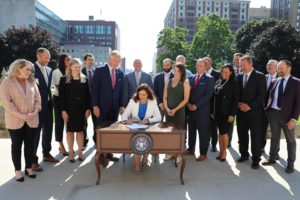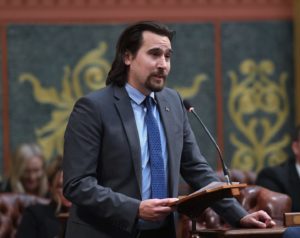As enrollment declines, Michigan has more public school teachers than past 10 years
(The Center Square) – A report on Michigan’s teacher shortage found that despite high numbers of teachers leaving their jobs, the state has more total teachers employed at public schools…

(The Center Square) – A report on Michigan’s teacher shortage found that despite high numbers of teachers leaving their jobs, the state has more total teachers employed at public schools than in the last 10 years despite declining statewide student enrollment.
The Michigan Teacher Shortage Study: 2024 Report by the Education Policy Innovation Collaborative at Michigan State University found that despite the influx of total teachers, specialized teachers were in short supply in some districts.
The report highlights the challenges school districts in rural and urban areas face in looking for special education, science and other specialized teachers while the overall number of educators in the state was higher than in years past.
“Teacher attrition and between-district mobility continued to increase in 2022-23, reaching higher levels than at any other time in the past decade,” the report reads. “At the same time, the numbers of new teachers earning their initial credentials, completing teacher preparation programs, and entering the state’s public school teaching workforce also reached new highs in 2022-23.”
The number of students in the state’s education system fell by over 126,000 between the 2013-14 school year and the 2022-23 school year, according to the state’s education data website.
The report found that teachers did not leave their posts during the 2020-2021 school year amid the pandemic but many did the following year, either to leave teaching or move districts.
Most of the teachers who started working in Michigan’s public schools were taught at colleges and universities in the state.
“More than three-quarters of the candidates who earned an initial teaching certificate in 2021-22 were teaching in a Michigan public school by the end of the next school year, compared to less than half of all newly certified teachers a decade earlier,” the report found.
“New teachers who entered the workforce in 2022-23 were more likely than those who exited to teach full-time in a single school building, and less likely to be contracted through third-party providers to teach virtual courses to students from many districts at the same time,” the report also found.
Science and special education teachers were in especially high demand, the report said, citing declines in the number of teachers getting certified to teach science and stagnating numbers for special education. Location also plays a role.
“Among the limited supply of new science and special education teachers entering Michigan’s public school teacher workforce, few went on to teach in the Upper Peninsula, the northern half of the Lower Peninsula, or in counties along the state’s southern border,” the report found. “School districts in these same regions are among those experiencing the most acute science and special education teacher shortages in the state.”
“There are school districts in every region where more than 25% of special education or science teachers are ‘under-credentialed’ for the content area or student population they teach,” the report found. That means over a quarter of teachers do not have certificates for science or special education of temporary credentials.
The report said that some of the districts facing the most severe shortages in the state were right next to those with the least severe shortages, indicating “that school districts in these communities are competing to recruit from the same limited pool of available teachers.”
The report said districts that offer “more appealing financial incentives, working conditions, and other benefits to prospective teachers likely have an advantage in hiring the teachers they need, leaving even fewer available teachers for other nearby districts.”
The shortages were most severe where there were more charter schools, the report found, but noted that charter schools “are primarily concentrated in urban areas.”
The report closed with a caution away from a one-size-fits all approach.
“While staffing has been a major challenge for school districts throughout Michigan, the specific challenges vary substantially across local contexts,” the report reads.



